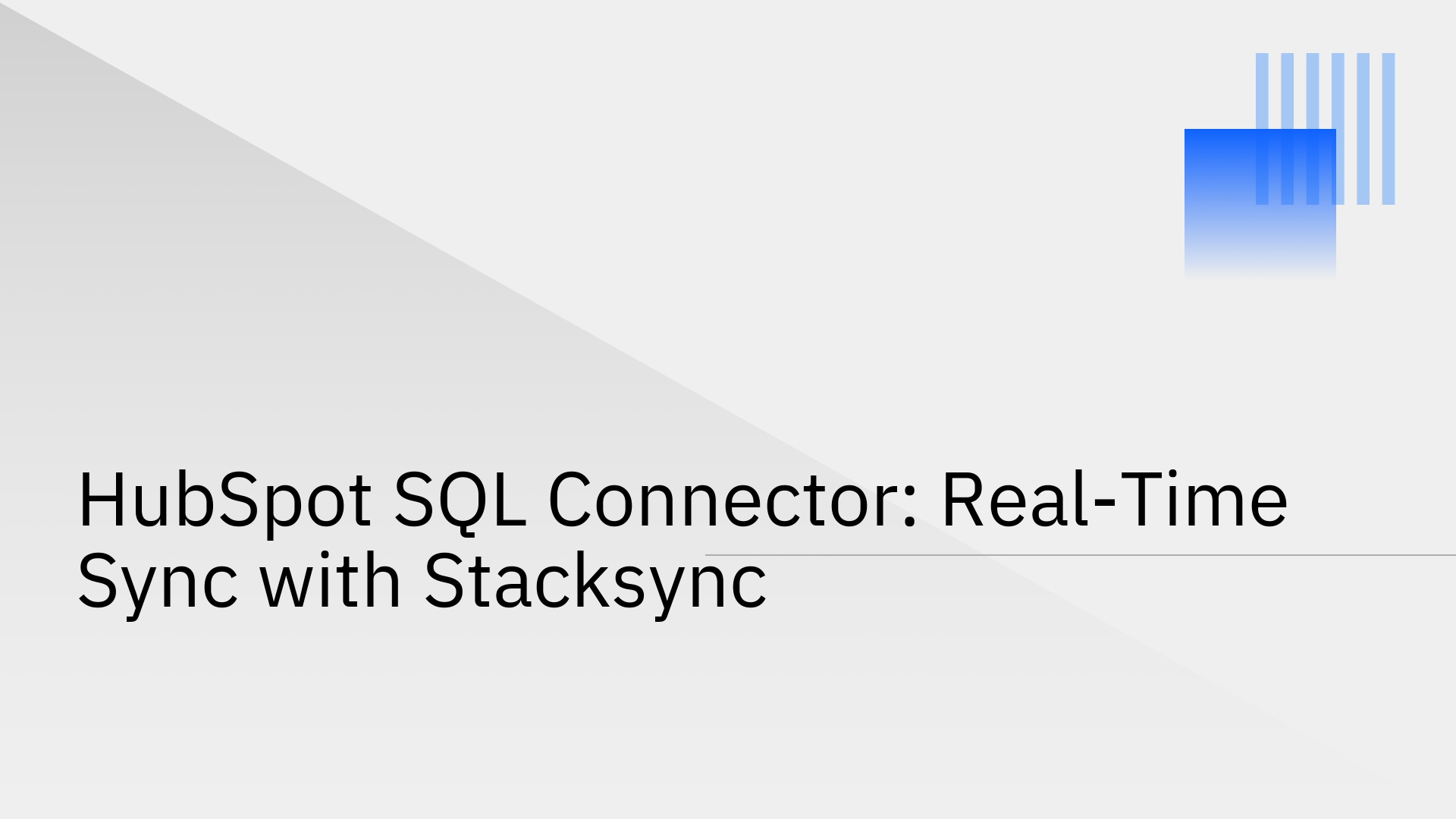
Connecting your HubSpot data with a SQL database is no longer a luxury it's a necessity for unlocking advanced analytics, powering internal applications, and establishing a single source of truth across your organization. However, traditional methods for achieving this are notoriously inefficient. Manual CSV exports are slow and error-prone, custom API scripts are brittle and consume valuable engineering resources often 30-50% of a developer's time and most ETL pipelines suffer from high latency, forcing teams to work with stale data.
A modern HubSpot SQL connector is engineered to solve this exact problem by creating a seamless, automated bridge between your CRM and database. Stacksync elevates this concept by providing a real-time, bidirectional HubSpot SQL connector that eliminates the complexity and latency of conventional tools, empowering your teams with consistently accurate data.
A HubSpot SQL connector is a specialized tool designed to bridge the gap between HubSpot's API-driven platform and a relational SQL database like PostgreSQL, MySQL, or SQL Server. Its primary function is to automatically replicate HubSpot objects such as Contacts, Companies, Deals, Tickets, and even custom objects into corresponding SQL tables.
This is critical because you cannot query HubSpot's live production database directly using standard SQL commands [5]. Access is only possible through its APIs. A connector handles the complexity of continuous API calls, authentication, pagination, and data mapping, making your HubSpot data readily available for complex queries and analysis within your own database environment.
While many tools claim to connect HubSpot to SQL, they often rely on traditional architectures with significant limitations that fail to meet the demands of modern, data-driven operations.
Most ETL/ELT tools operate on a batch-processing model, syncing data on a fixed schedule—often every hour or even just once a day [4]. This introduces significant data latency. The result is that sales, marketing, and success teams are forced to make decisions based on outdated information, leading to inaccurate reporting, missed revenue opportunities, and inefficient customer interactions.
The vast majority of connectors only support a one-way data flow, pushing data from HubSpot to the database. This architecture creates a read-only replica and completely prevents you from using your database to enrich or correct data back into your CRM. You can't run a lead scoring model in your database and push the scores back to HubSpot, or cleanse contact data in SQL and have it reflect in the CRM, creating a frustrating operational bottleneck.
Building and maintaining custom integration scripts is a significant drain on engineering resources. These custom solutions are brittle, prone to breaking with HubSpot API updates, and rarely scale to handle growing data volumes or API rate limits effectively. Even some pre-built connectors can struggle with large datasets [3], turning what should be an automated process into a perpetual maintenance burden.
Stacksync is purpose-built to overcome the limitations of traditional tools, offering the most advanced and reliable solution for real-time HubSpot-SQL integration. It's not just another ETL tool; it's an operational data backbone designed for performance, reliability, and ease of use.
Here’s what sets Stacksync apart:
With Stacksync, you can finally achieve a truly unified data ecosystem. Check out our HubSpot two-way sync integration to learn more.
You can establish a production-ready, real-time sync between HubSpot and your SQL database in under five minutes.
Combine HubSpot data with product usage data from your application database, financial records from your ERP, and support tickets from Zendesk in a central data warehouse like Snowflake or BigQuery. This allows you to build comprehensive, real-time dashboards for a true 360-degree customer view.
Feed live, accurate customer data from HubSpot directly into your custom-built internal tools. Empower sales teams with up-to-the-second lead scores or give account managers a unified view of product usage and account health without them ever needing to switch tabs.
Leverage the power of your database to run complex data enrichment models. Automatically classify industries, calculate lead scores, or predict churn, and have the results seamlessly sync back to custom fields in HubSpot, arming your customer-facing teams with powerful insights. Our definitive guide to syncing HubSpot with PostgreSQL covers this type of advanced setup.
Trigger automated workflows across your entire tech stack the instant a deal stage changes in HubSpot or a user completes a key action recorded in your product database. From sending a welcome email to provisioning a new account, real-time sync makes immediate actions possible.
While connecting HubSpot to a SQL database is a critical step for becoming a truly data-driven company, traditional methods are too slow, rigid, and resource-intensive for modern business needs. Slow, one-way data dumps simply can't keep up.
A modern HubSpot SQL connector is the definitive answer, and Stacksync stands alone with its proven real-time, bidirectional synchronization, enterprise-grade scalability, and effortless no-code setup. Stop letting data latency and brittle pipelines dictate your operations. Embrace real-time integration and unlock the true potential of your data.